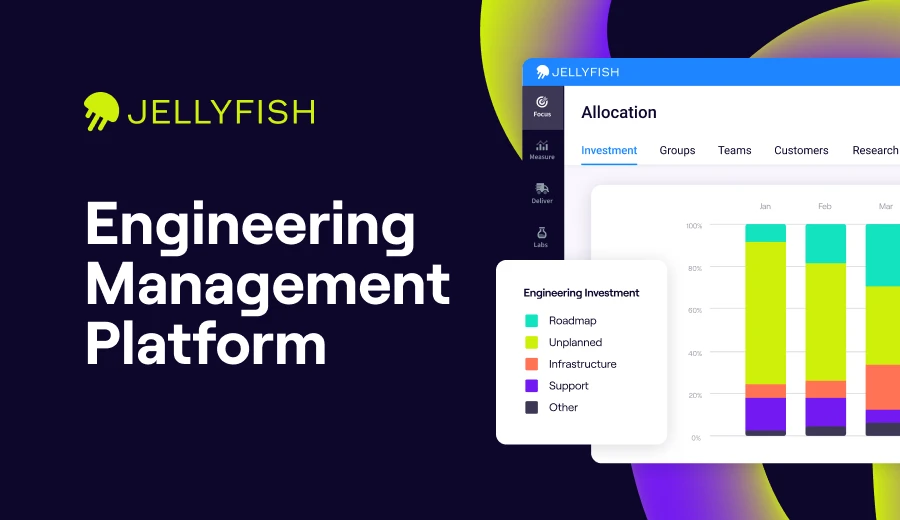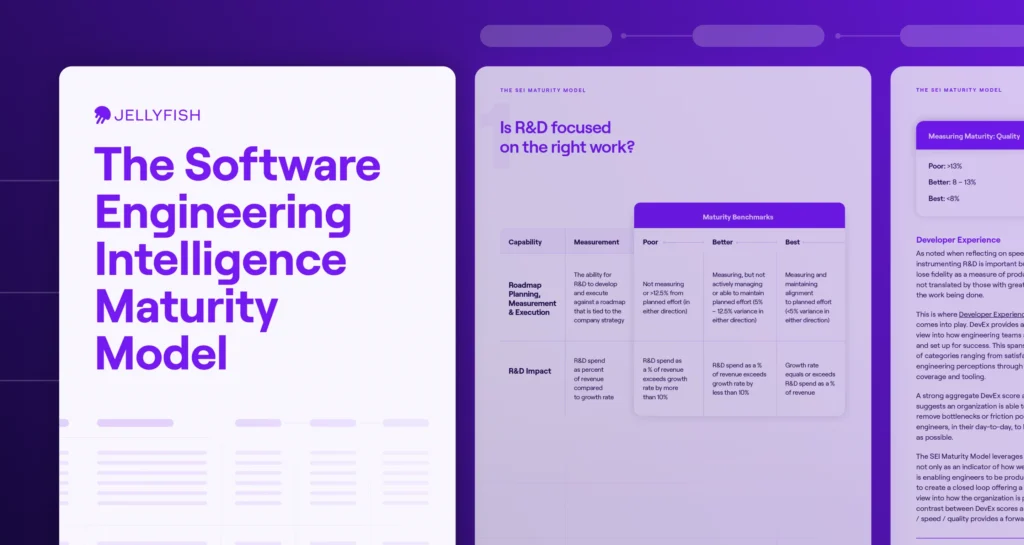Engineering Management Platform
Powered by our patented allocations model and boasting the industry’s largest customer dataset.
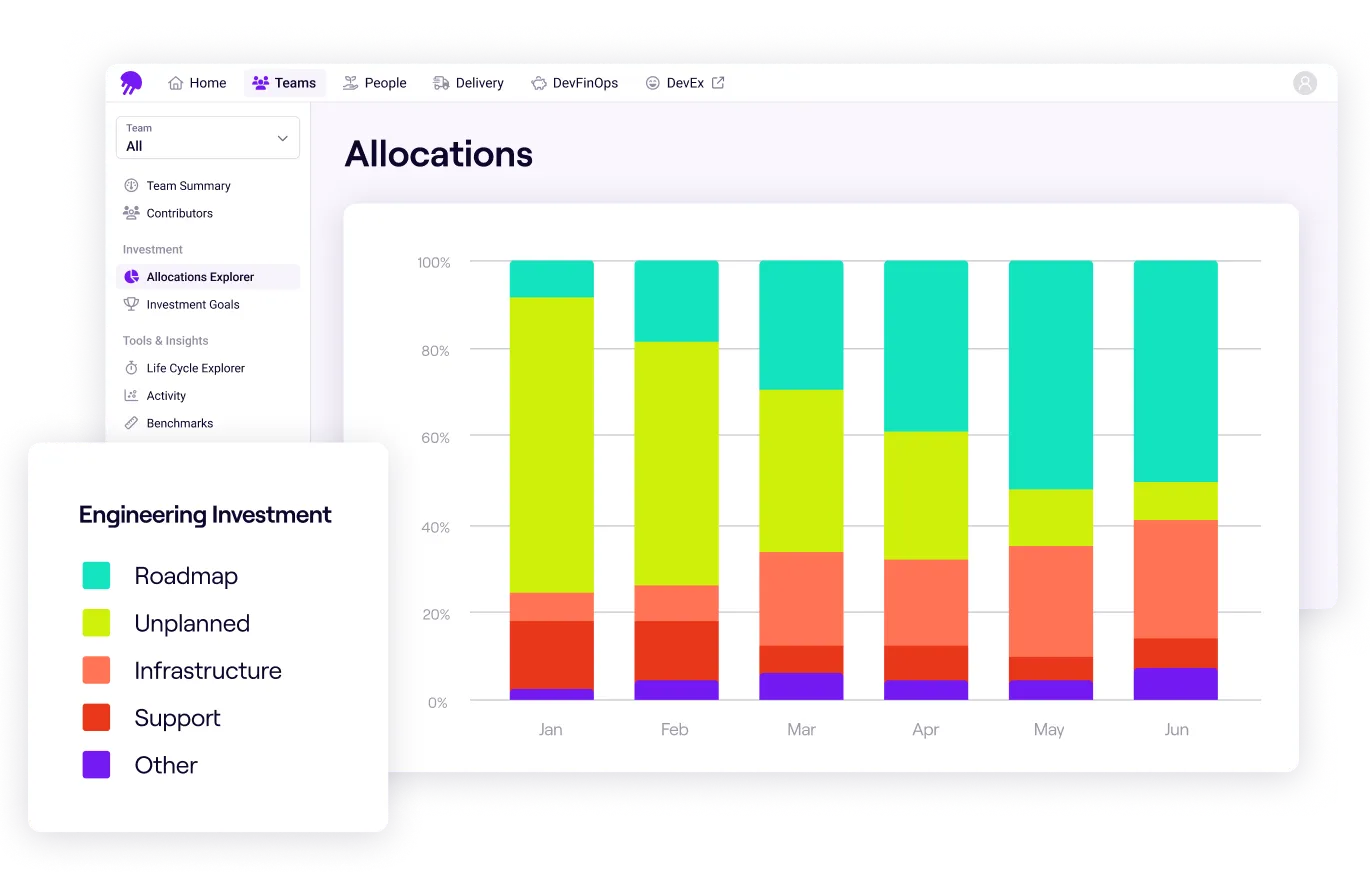
Understand where you are now & where you need to go.
Tour the Engineering Management Platform
Check out how Jellyfish helps teams work better, feel more confident, and achieve better results.
“Jellyfish has dramatically improved our understanding of the reality of development across the business. We can easily show how resources are allocated and what trade-offs need to be made to deliver on long-term plans and strategies. This has gone a long way to ensure Engineering remains an internal partner that people can rely on.”
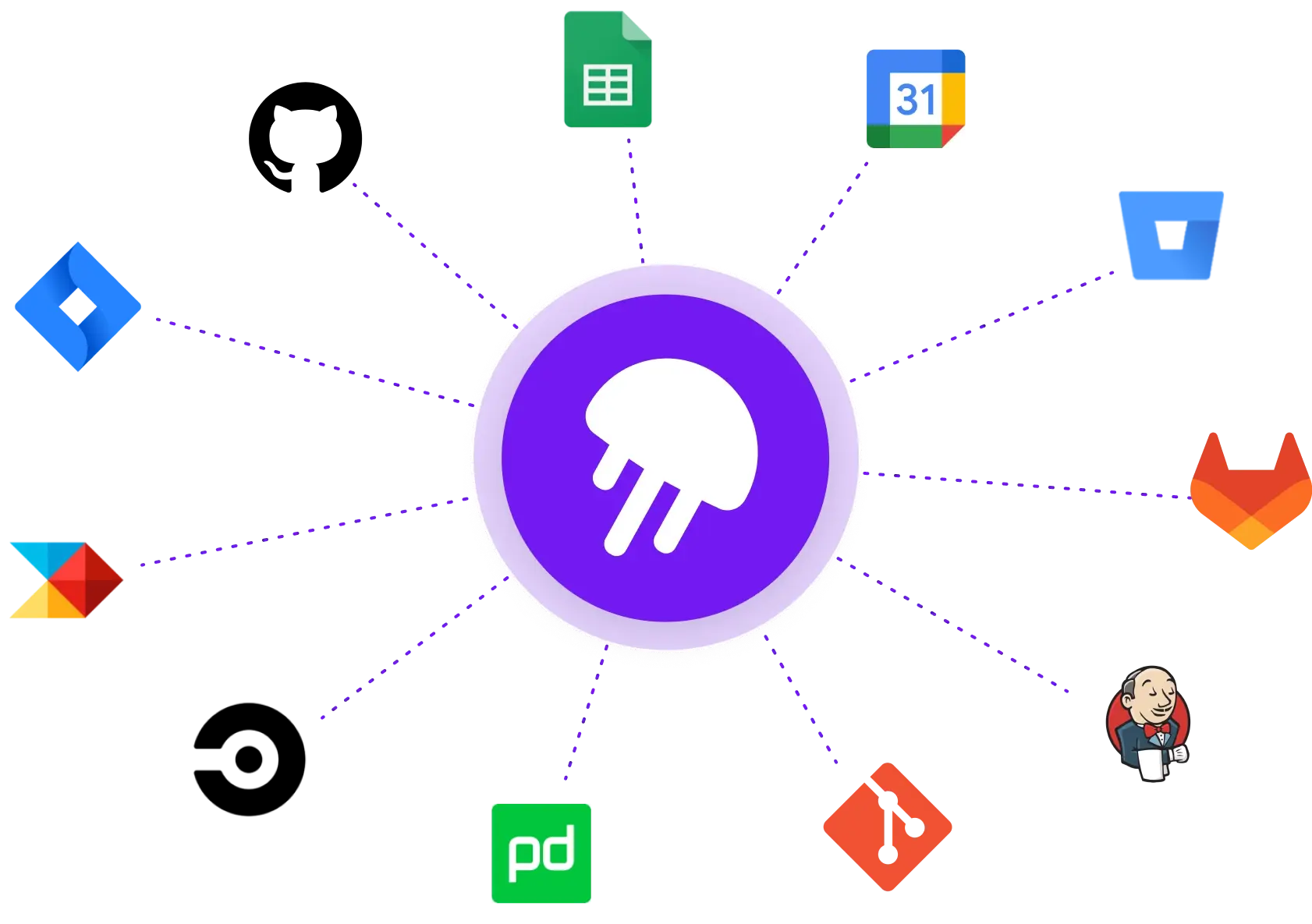
Engineering signal analysis
Effortless integration of data from engineering tools you already use and qualitative sentiment input for a comprehensive view of the team’s effort.
Contextualized with business data
Include information from calendars, finance, and HR to demonstrate the complete impact of your team.

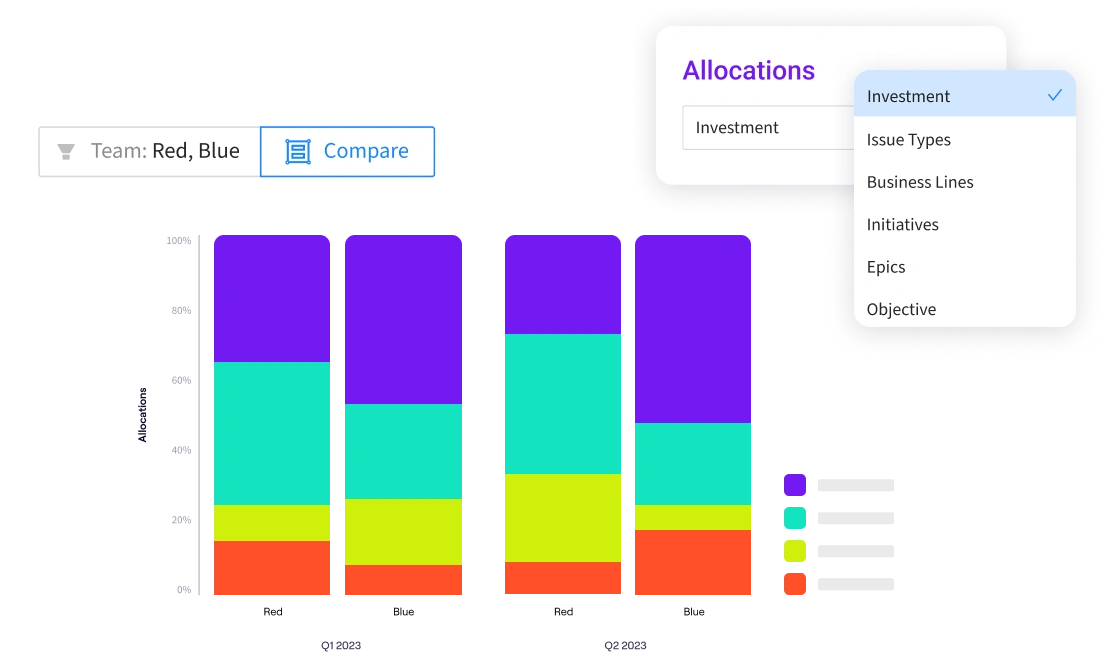
Customized for your needs
Configure reporting and visualizations to highlight the information that’s most important to your team.
Your data. Our science.
Jellyfish seamlessly integrates with your existing tools, giving you the visibility you need without disrupting your workflows, cleaning up your data, or using cumbersome BI tools.


